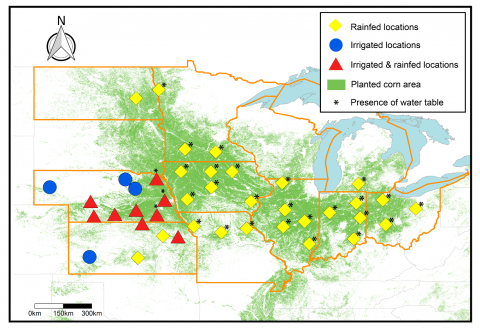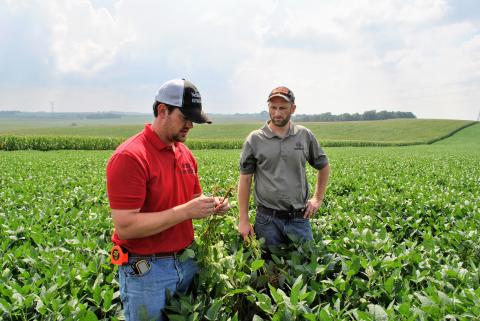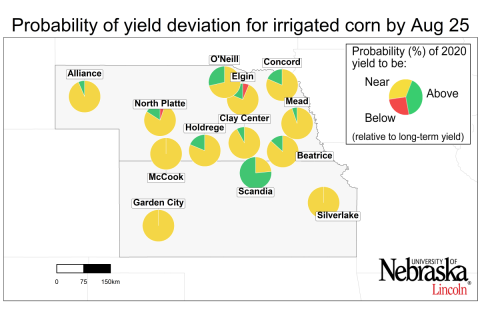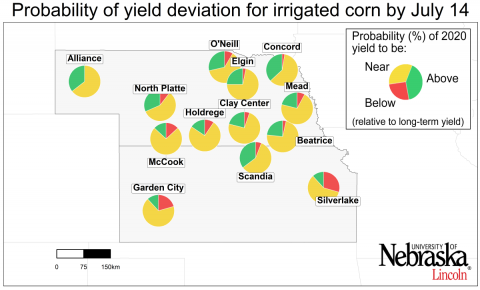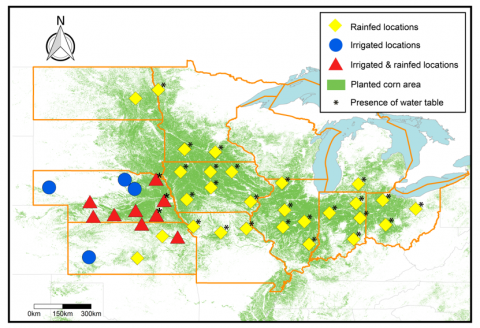2021 Corn Yield Forecasts: Approach and Interpretation of Results
June 30, 2021
The Yield Forecasting Center (YFC) will provide real-time information on corn phenology and forecasts of corn yield potential every three weeks, starting in mid-July, to aid growers and ag industry in making management, logistics and marketing decisions through the 2021 season.
What Have We Learned about Soybean Seed Constituents in Irrigated and Dryland Producer Fields in Nebraska?
June 14, 2021
With a continuous decline in seed protein concentration in U.S. soybeans, UNL researchers examined how irrigation practices in Nebraska may contribute to this issue for soybean growers.
Three Practices May Help Farmers Achieve Higher Soybean Yields, Profits
April 5, 2021
Results of an on-farm research study that evaluated three management practices — planting date, seeding rate and the use of foliar fungicides and insecticides — to increase soybean yields.
2020 Corn Yield Forecasts: End-of-season Forecasts Suggest Near-average Yields for the Region
September 17, 2020
Our forecasts suggest a near-average year for irrigated corn at most sites. For rainfed corn, the scenario is diverse across regions.
2020 Corn Yield Forecasts as of August 25
August 27, 2020
Compared with our previous forecasts, there is still a high probability of near-average yields for the majority of the irrigated sites. For rainfed corn, the scenario is diverse across regions.
2020 Corn Yield Forecasts as of August 4
August 6, 2020
Similarly to our previous forecast, there is a high probability of near-average yields for the majority of the irrigated sites. For rainfed corn, the scenario is diverse across regions.
2020 Corn Yield Forecasts as of July 14
July 16, 2020
Although it is still too early to make strong inferences about end-of-season yields for irrigated corn, there is a relatively high probability for near-average yields for a majority of sites.
2020 Corn Yield Forecasts: Approach and Interpretation of Results
July 9, 2020
The Yield Forecasting Center (YFC) will provide real-time information on corn phenology and forecasts of corn yield potential every three weeks, starting in mid-July, to aid growers and ag industry in making management, logistics, and marketing decisions through the 2020 season.

